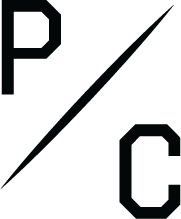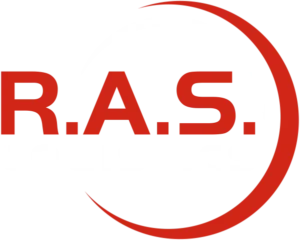7 ERP Implementation Success Stories from Real-World Companies
Discover inspiring ERP implementation success stories. See how businesses transformed operations, boosted efficiency, and achieved growth with the right ERP solutions.
Table of Content
Successful ERP implementations have a few things in common.
They launch on time, on budget, with all planned features and functionality optimized and ready for use. People, processes, and technology work together to drive specific outcomes upon launch.
The similarities end there. “Outcomes” could be anything – enabling customer self-service, optimizing warehouse logistics, consolidating global enterprise options into one unified platform.
But, every organization has a different idea of what those outcomes should look like, and many different variables that inform decisions about solutions and strategies.
Here, we look at seven very different ERP implementations that showcase how diverse and personal these projects can be.
Glider Guard is a company that designs and builds die, tooling, and molding solutions for automakers.
After six decades in the game, the company has been through its fair share of growing pains and pivots. Glider Guard now employs 75 people and, following a period of steady growth purchased a second manufacturing plant.
Soon after finalizing the deal, the company realized they’d need to redesign critical processes to keep up with growing demand.
Long-time office manager Kathy Marsden says the company’s small size meant everyone knew where everything was and what they needed to do.
With the second location, mentally tracking everything was no longer possible. So, the Glider Guard team set out to find an ERP that met the following requirements: inventory tracking, PO management, and a unified data foundation that would enable them to use historical insights to create more accurate quotes.
The company landed on Genius ERP, designed for small- to mid-sized manufacturers. The platform includes advanced features — inventory control, product engineering, production planning, and more. The best part? They can tap into these capabilities without the costs and complexity of most manufacturing ERPs, which are made for much larger orgs.
The company opted to take things slow — implementing the new ERP in phases. This gave them the foundation they needed to maximize the impact of their investment — and drive growth on their terms.
Professional services firm CWS International offers custom hygiene solutions for various companies. Solutions cover a lot of ground: consulting and implementation services, equipment rentals, maintenance, and more.
In 2015, CWS International had a separate stack for managing each entity. They wanted a global, cloud-based ERP that would allow them to manage updates, security, and compliance. At the same time, they needed to ensure the new system would also serve the niche needs of each brand.
Most CWS branches were using versions of SAP’s on-prem ERP that were so over-customized that maintaining them was no longer realistic. A lift-and-shift migration to a cloud-based version of SAP was out of the question. Existing processes were too complex to reuse as global templates, and they’d need to rebuild customizations from scratch.
Instead, the firm chose Dynamics 365 for its flexibility, ease of use, and advanced integration capabilities.
CWS moved most operations into D365, preserving continuity and allowing them to receive feature enhancements and updates as they built their strategy.
The ERP strategy uses Dynamics 365 as the “hub” for a “hub and spoke-style“ ecosystem. Here, D365 is the foundation for all “spokes,” the apps and services used by individual business units. The spokes extend the core platform and provide targeted capabilities to specific groups.
CWS used this model to build a best-in-breed stack from a patchwork of vendor solutions that meet the very different needs of each unit.
Everything connects to the same hub so that CWS can manage its entire portfolio in one place. Data flows seamlessly between various spokes, just like any typical all-in-one platform.
For example, they use Salesforce to manage sales quotes and accounts. D365 Field Service handles fleet management and service operations.
The company also uses the D365-SAP integration for warehousing and supply chain processes. Employees perform daily work in SAP and all inventory and procurement data syncs back to D365 in real time.
This allowed the company to implement while maintaining continuity. And, by eliminating the need for retraining, there was no waiting period for getting employees up to speed.
Ambassador Foods is a small wholesale distributor that helps international food & beverage brands get their products in front of the right buyers.
 Ambassador helps clients tap into new markets — eliminating many of the barriers and risks of global expansion. The company negotiates rates, rebates, and shelf space with retailers and helps brands promote their products to new audiences.
Ambassador helps clients tap into new markets — eliminating many of the barriers and risks of global expansion. The company negotiates rates, rebates, and shelf space with retailers and helps brands promote their products to new audiences.
With so much on the line, it’s surprising that Ambassador stuck with QuickBooks for so long.
For years, the company struggled to manage data from various clients, retail partners, manufacturers, and marketing platforms — forcing employees to perform calculations by hand to make strategic decisions.
In 2017, Hurricane Irma struck Ambassador’s on-prem system, forcing them to hobble without an ERP for two weeks.
A few years later, the company moved to an all-in-one platform. They replaced QuickBooks with NetSuite ERP. This allowed Ambassador to address data and continuity issues. From there, they were able to start working on more meaningful improvements.
NetSuite’s real-time ability to capture and analyze data allowed the Ambassador team to generate rebate offers on demand.
The spreadsheets and scratchpads are gone, and everyone works from a single source of truth.
Today, there’s less back and forth between teams. Clients now have more transparency into contracts, rates, and SLAs. And the company has total control of its margins.
Post-rollout, the company sought to add more NetSuite apps to its stack to build on those initial gains. At the time, the company was considering SuiteCommerce for direct-to-consumer fulfillment and was working on a strategy for leveraging
NetSuite’s built-in CRM and marketing functions.
This project was successful because Ambassador Foods took employee learning as seriously as the actual implementation.
They used NetSuite’s Learning Cloud Support (LCS) to build a platform for employee access to training and support resources. The company used LCS as a tool for helping employees navigate the transition. Since then, the platform has grown into a robust learning hub, enabling continuous learning among employee ranks.
 Peace Collective is a Canadian direct-to-consumer brand on a dual mission: making fashion more sustainable and raising money for communities and organizations working to improve the world.
Peace Collective is a Canadian direct-to-consumer brand on a dual mission: making fashion more sustainable and raising money for communities and organizations working to improve the world.
The company always looks for ways to make manufacturing and sourcing processes more sustainable. Each product line supports a dedicated cause. Think — improving access to mental health services or helping food banks serve more hungry people in their communities.
Peace Collective has two physical stores in Toronto and a multi-channel e-commerce operation spanning the globe.
As they grew, meeting demand without undermining social and environmental commitments became harder. Fragmented systems and siloed sales channels meant little visibility into supply chain operations. As a result, they struggled to control costs and enforce the ethical standards outlined in their mission statement.
Peace Collective needed a system to help them tackle these challenges, take their business to the next level, and stay true to their values.
Katana allowed Peace Collective to embrace an on-demand manufacturing model. The move allowed them to move away from spreadsheets and fragmented warehousing solutions. As a result, the company more than doubled the number of made-to-order products in its catalog.
![]() Regional sporting goods retailer Fin Feather & Fur contacted us because their ERP wasn’t meeting their needs. At the time, the company used Oracle’s JD Edwards ERP and struggled with inefficiencies, unreliable data, and poor visibility across six brick-and-mortar and two e-commerce storefronts.
Regional sporting goods retailer Fin Feather & Fur contacted us because their ERP wasn’t meeting their needs. At the time, the company used Oracle’s JD Edwards ERP and struggled with inefficiencies, unreliable data, and poor visibility across six brick-and-mortar and two e-commerce storefronts.
The Edwards ERP is a solid platform. It offers a robust feature suite with features that support everything from agribusiness and real estate to manufacturing, logistics, and complex real estate and construction projects.
The problem is that it wasn’t designed for retail. Velosio experts worked with Fin Feather & Fur to find a better platform aligned with their business model and settled on Dynamics 365 Business Central.
We worked with the client to merge and unify all data, people, and processes across all six locations. We helped them automate financial processes, manage promotions, and enforce ATF compliance for all firearms sales.
We also implemented a handful of integrations to fill critical gaps. We found a POS solution from ISV provider LS Retail that helped the company streamline in-store and online operations.
For inventory management, we went with a third-party barcoding system called Bartender. We built a custom extension for D365 BC — giving our client enhanced visibility into its massive product catalog and more control over inventory and order management processes.
Hampton Lumber is a family-owned lumber company that opened its first sawmill over 80 years ago. Hampton has grown into a multi-billion-dollar enterprise for four generations — boasting several mills and 500k acres of Pacific Northwest forestland.
Hampton’s ERP journey began at a 2008 Epicor conference. Business Analyst Anna Toloeva explained that, at the time, the company was struggling with its in-house EDI system.
The company was growing, but manual, time-consuming, and error-prone processes eroded customer experience. They struggled to track and control financial transactions. And they were also too dependent on too many third-party vendors.
At the same time, customers were also starting to demand more electronic data sharing and online services.
Moving to a centralized, integrated EDI allowed the company to tackle long-standing data mapping issues. They standardized processes and cut suppliers. They also automated processes like data entry, invoicing, and order entry that were slowing them down before.
Together, these actions improved data accuracy and visibility, saving them roughly $25k per year.
Toloeva says that access to real-time insights has given Hampton employees much more autonomy. Now, they can solve problems and drive improvements on their own.
Over the last decade and a half, Hampton has made significant progress toward its sustainability goals. They’ve used data to cut down on paper waste, optimize logistics, and embrace dynamic purchasing strategies.
These days, Epicor HQX deployment is still underway. The company has been rolling out the solution to its wholesale locations — but prefers to take on one project at a time.
Epicor integrates with various ERP systems and data sources, so working with each site is easy, regardless of their software choices. Branches can also deploy Epicor’s LumberTrack solution without a migration so all users can access the same insights.
The lesson here is that implementation could be the first step in a decades-long journey.
Hampton Lumber was able to build an ERP foundation that could evolve along with the business. But they did this because they took the time to find the right partner and the right solution. More importantly, they did this because they had org-wide support from the get-go.
 RAS Logistics began in 1998 as a small appliance installation service. In 2001, GE won a bid to deliver appliances for Home Depot. GE then contracted with RAS to provide and install its washers, dryers, and refrigerators to Home Depot shoppers’ homes.
RAS Logistics began in 1998 as a small appliance installation service. In 2001, GE won a bid to deliver appliances for Home Depot. GE then contracted with RAS to provide and install its washers, dryers, and refrigerators to Home Depot shoppers’ homes.
Then, from there, things started taking off. CFO Glenn Pearson explains that as Home Depot grew, RAS grew, too.
The company soon caught the eye of other big names, including Restoration Hardware, Mattress Firm, and Wayfair. And, like that, RAS was in the business of delivering all kinds of large items from mattresses and furniture to spas and treadmills.
The company grew from one location to 21, averaging more than $40M in annual sales. RAS needed a web-based solution to replace an aging internal server — and to accommodate future change and growth.
Each location was a separate legal entity, operating in its silo — using an entry-level QuickBooks program to manage its complex finances. The company was using QuickBooks to manage basic finance and accounting tasks. However, QuickBooks could not merge financial statements across all 21 entities.
Pearson says very few accounting functions were able to integrate across silos, which meant accounting had to enter some entries manually. He added that accountants only had time to record these entries a handful of times each month.
Pearson says he wanted a system to track the company’s financial performance at a glance and automate processes. He also needed something that could deliver remote access and real-time insights to RAS’ location managers.
The company looked into several options, including Microsoft Dynamics, NetSuite, and Sage. But, Pearson says, most ERP products require customization to get data from their on-prem SQL database into the cloud.
RAS ended up going with Acumatica, which supported most of its requirements out of the box. They used the platform to unify siloed operations, gain real-time visibility into all finance and accounting activities, and eliminate manual processes.
Small improvements like being able to process check runs from one location and eliminating the need for duplicate entry saved RAS accountants countless hours. This allowed the company to increase transaction volume without hiring additional staff.
One big takeaway is that RAS took the time to find a solution that met most of their needs straight from the box. This enabled them to keep costs down without compromising on core capabilities.
These case studies highlight a range of ERP goals, solutions, and strategies. Yet, they all underscore the importance of proper planning, targeted goals, and a laser focus on outcomes.
As a veteran Microsoft Dynamics 365 and NetSuite ERP partner, Velosio knows what it takes to achieve ERP success . Whatever that means for your company.
Our ERP experts will work with your team to develop a game plan that gets you where you need to go. We’ll help gather requirements, find the perfect-fit platform, and nail the implementation. We can also tailor ERP & CRM solutions around your organization’s unique challenges and goals.
Contact us today to learn more.
Explore the journeys of businesses like yours with our collection of compelling client stories. Learn from real-world examples of how organizations across various industries have overcome challenges, achieved their goals, and driven transformative growth. Read about their success here.
Talk to us about how Velosio can help you realize business value faster with end-to-end solutions and cloud services.
"*" indicates required fields